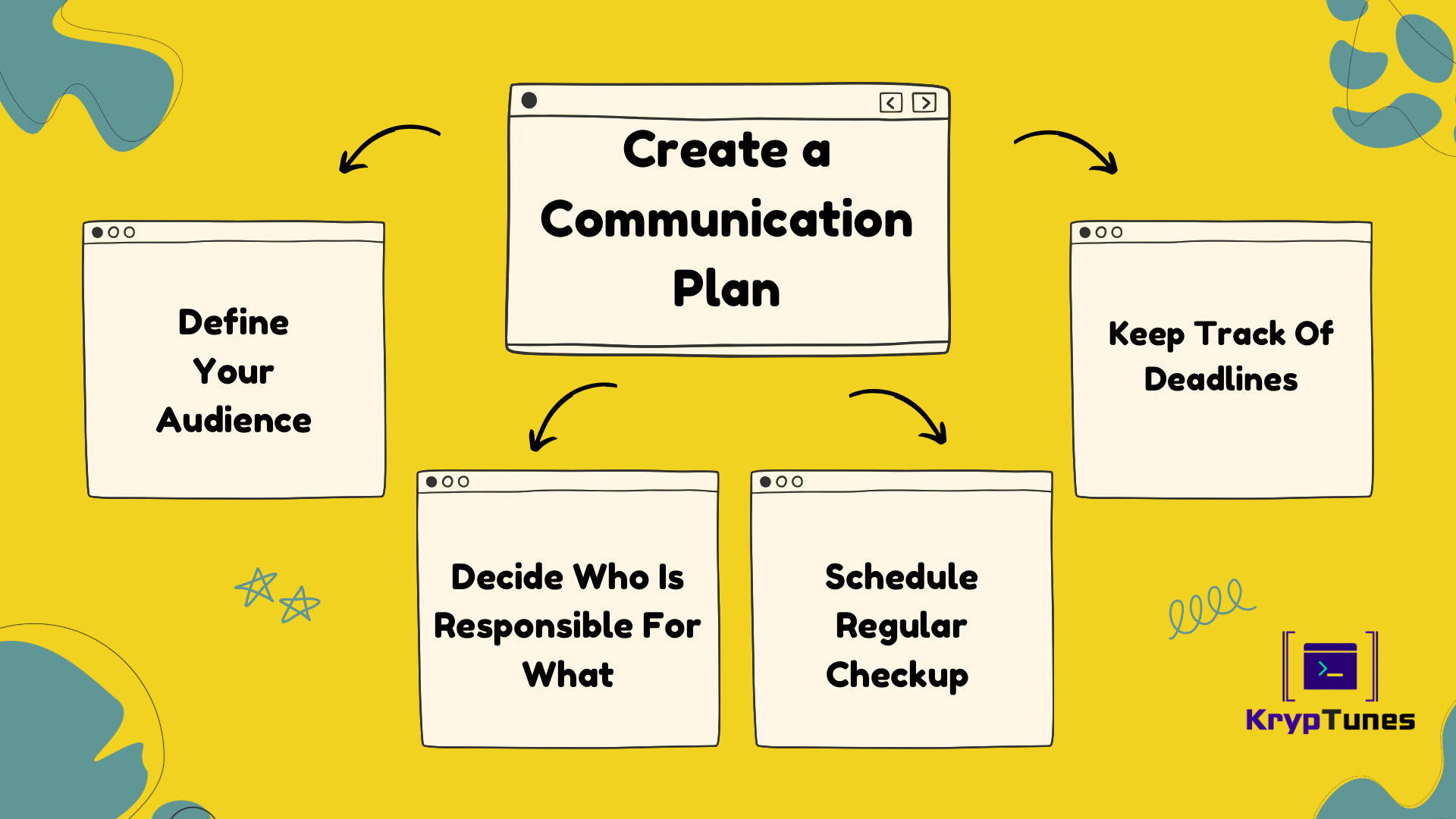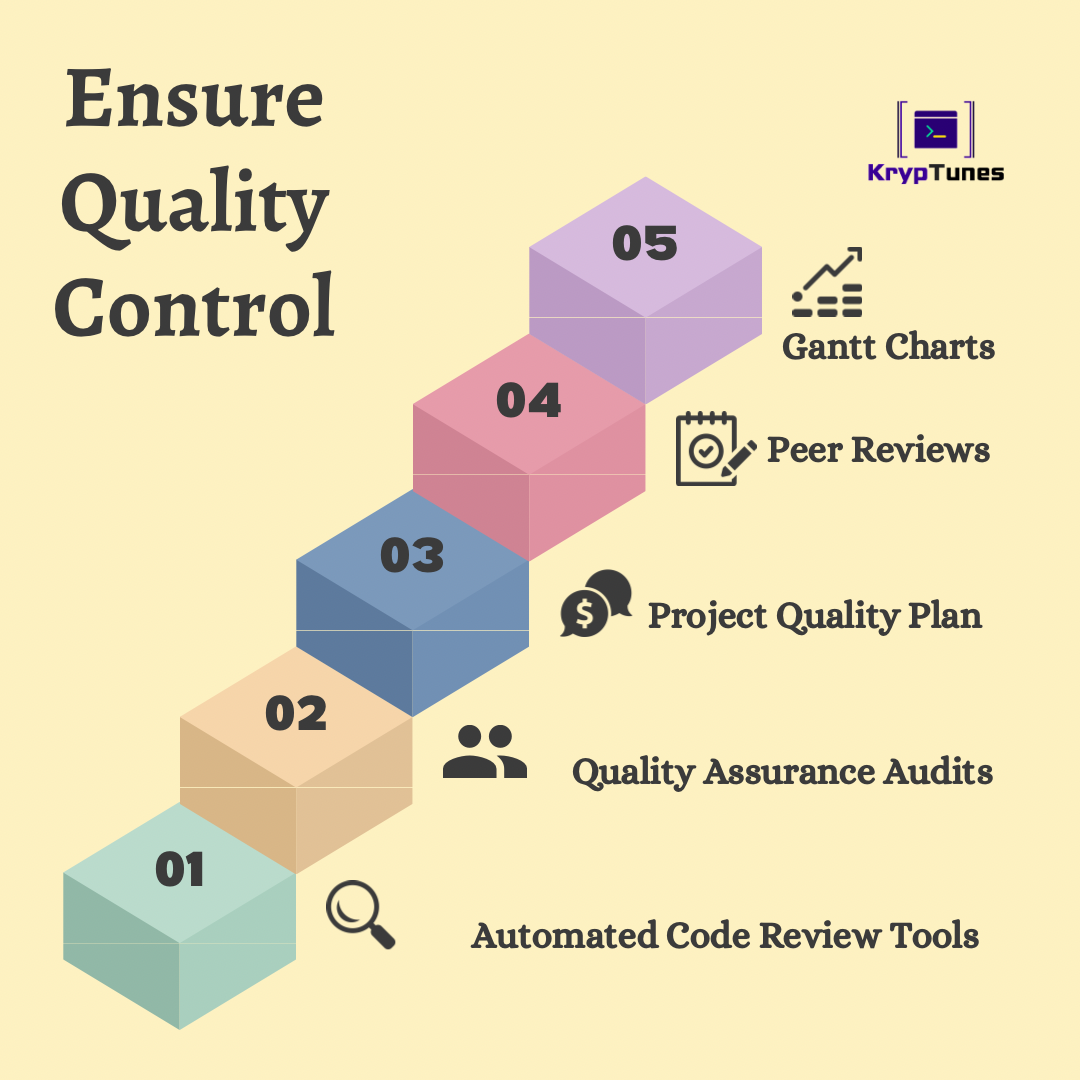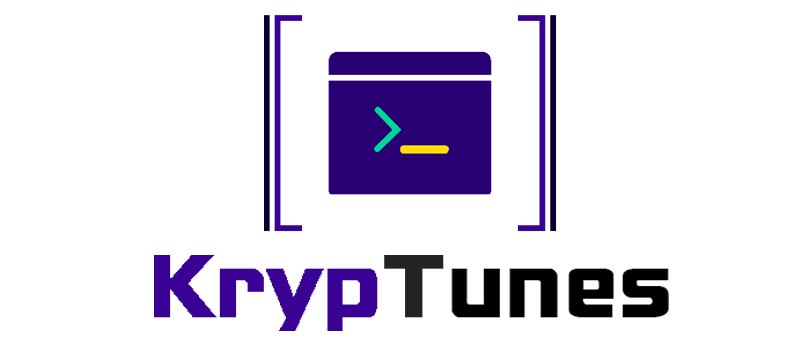How to keep a project on schedule

As a project manager running multiple projects, I often feel overwhelmed with all the projects I manage. I am in constant fear of getting behind schedule. This stress has caused me to explore the practices to overcome this challenge.
In this blog post, I will share tips on keeping any project on track and ensuring it stays on schedule.
Define the Project Goals
- Before you can get your project on track, you need to define your project goals. Understanding the goals allows you to set task dependencies, determine the critical path, and create a communication plan.
- How can you ensure you get there if you don't know the end goal? That's why it's essential to clearly define your project goals and ensure everyone on the team is on the same page.
- Setting clear project goals also help eliminate confusion and ensures that everyone involved knows exactly what's expected of them. Plus, it helps ensure that you're all working towards a common goal instead of getting stuck in the weeds of individual tasks.
- Ensuring your project goals are realistic and achievable is also essential. We all have ambitious ideas, but it's necessary to remember what is possible with the resources and time available.
- Once you have defined your project goals, it's time to start setting up a plan to ensure they are achieved! That's where task dependencies, critical paths, and communication plans come into play - but we'll cover those in a future blog post!
Set Task Dependencies
Ah, task dependencies. As a project manager, I know how important they are – and how difficult they can be if you don't have the right tools and processes.
Here's what you need to know:
- Understand the Different Types of Task Dependencies:
- Visualize your Workflows in the Tool :
In the Project management Language, there are several different types of task dependencies, including Finish-to-Start (FtS), Start-to-Start (StS), and Finish-to-Finish (FtF). Make sure you understand the differences between them so that you can create the most efficient workflow.
2. Double-Click for Dependencies: In most project management tools, you can easily set task dependencies by double-clicking on a task and selecting them from the right pane. It's that easy!
3. Unlink Tasks When Necessary: Don't forget that you can always unlink tasks if necessary. This can be helpful if you need to reschedule charges based on any links or constraints in place.
4. Get the Right Tools for the Job: If your projects are large and complex, consider investing in advanced tools such as the Ultimate Control Plan to help you optimize your schedule and task dependencies.
So there you have it – now go forth and manage those task dependencies like a pro!
Determine the Critical Path
Steps to Determining the Critical Path
- Identify the project goals and tasks: Before determining the critical path, you must know what you're working towards and which tasks must be completed.
- Order and identify dependencies: After determining the tasks, decide which ones you need to do first, which ones need to be done together, and which ones can be done in any order.
- Calculate task durations: Estimate how long each task will take so that you can map out the timeline for your project.
- Draw a network diagram: Use a chart to visualize how long each task will take and how they all fit together.
- Trace the critical path: Use arrows to trace through the longest track on your network diagram—that's your critical path!
- Monitor progress: Keep an eye on your critical path tasks as you go along—if something takes longer than expected, it could throw off your entire timeline.
- Adjust when necessary: If something changes, don't be afraid to adjust your plan—it's better to be flexible than miss a deadline!
Review Plans, Specs, and Project Documents
It's time to review plans, specifications, and project documents - all the stuff that might make you feel like you're back in school! But don't worry because this vital step helps keep your project on track and schedule.
Start by reviewing your project charter. This should give you an overview of the project's scope, objectives, and timeline. You should also check the project plan, schedule, specifications, and other supporting documents. Doing so will help ensure that everyone is on the same page when it comes to expectations.
Reviewing any budget documents you may have created is also wise to ensure your project is running smoothly. Finally, don't forget to check any communication plans or quality control measures you may have implemented.
Now that all your ducks are in a row, it's time to move on to the next step: determining the critical path!

Create a Communication Plan
Ah, the dreaded communication plan. It can be a pain, but it's essential for any project. After all, without it, how would you know who was supposed to do what and when? So, let's create a communication plan to ensure your project stays on track.
1. Define Your Audience: Who are you communicating with? Who needs to know what and when?
2. Set Up Communication Channels: Email? Does group chat? Video conferencing? Figure out what works best for your team and your stakeholders.
3. Decide Who Is Responsible For What: Who will collect and disseminate information?
4. Establish Frequency of Updates: How often should updates be sent out? And how will they be sent out (e.g., email, group chat)?
5. Make Sure Everyone Is On The Same Page: Are all stakeholders and team members on board with the plan and timeline?
6. Keep Track Of Deadlines: Make sure everyone is aware of deadlines and is on the same page about when tasks must be completed to keep the project on schedule.
7. Schedule Regular Check-Ins: Review the project status and ensure everyone is informed of any changes or roadblocks that may arise.
Creating a communication plan isn't always fun, but it's essential to staying organized and keeping your project on track!

Ensure Quality Control
I'm sure you've heard the phrase "quality over quantity." Well, that phrase applies to project management as well. After all, no one wants a low-quality project. That's why it's essential to ensure quality control throughout your project. Here are some tips on how to do just that:
- Automated Code Review Tools: Automated code review tools can help ensure your code is error-free and up to standards.
- Quality Assurance Audits: Quality assurance audits are a great way to identify areas of improvement in your project and make adjustments accordingly.
- Project Quality Plan: A quality plan should be developed before the start of the project and should include activities, methodologies, standards, and procedures for achieving high-quality deliverables.
- Peer Reviews: Peer reviews are essential to reviewing project outputs and ensuring they meet quality standards.
- Gantt Charts: Gantt Charts effectively track progress and ensure your project is on schedule and within budget.
These are just a few tips on ensuring quality control throughout your projects. With the right tools and processes, you can rest assured that your projects will be completed on time and with the highest quality!
Monitor and Track Progress
As a project manager, it's essential to monitor progress. Here's how I keep my projects on track:
- First, I understand the project's goals and objectives clearly. This helps me monitor progress against target outcomes and deadlines.
- Next, I identify task dependencies and create a critical path to ensure that each task is completed in the correct order with the right resources.
- Then, I review project plans and specifications to ensure everything is on track and avoid pitfalls – like eagle-eyed quality control processes!
- After that, I create a communication plan so everyone involved in the project knows what's expected of them and when tasks must be completed.
- Once that is in place, I can start monitoring and tracking progress – like a detective! This means looking at time estimates, budgets, milestones achieved, and any risks associated with the project (and how they can be managed).
- Finally, if things change during the project (which they usually do!), I adjust the schedule as needed to keep things moving along smoothly.
Managing Risk
Keeping a project on schedule is essential to managing Risk and can be challenging. Unexpected events can always arise that may throw off your timeline, which can cause delays, increase costs, and ultimately impact the success of your project. However, having a plan for mitigating and avoiding risks can keep your project on track and improve your chances of success.
Here are some tips for managing Risk:
- Identify potential risks early – the sooner you identify them, the better prepared you'll be when they arise. To do this, you should conduct a thorough risk assessment at the beginning of your project to identify potential risks that may impact your project timeline. Some examples of risks that may arise include changes in scope, resource constraints, or unexpected delays due to external factors.
- Develop a risk management plan – an effective plan will help you identify, assess, monitor, and treat any risks during your project. Your risk management plan should include strategies for mitigating and avoiding hazards and contingency plans if things don't go as planned. It should also outline responsibilities and procedures for monitoring and reporting on risks throughout the project.
- Track changes in the risk register – changes in the risk register should be monitored closely, and any updates should be added immediately. Doing so can ensure that your risk management plan is up-to-date and effective in responding to new risks.
- Build contingency into your estimates – adding a contingency to the budget and schedule will help you prepare for the predicted impact of risks. Contingency should be built into your calculations at the outset of the project and adjusted as necessary throughout the project. This will help you stay on track and ensure unexpected events don't derail your project timeline.
- Monitor progress frequently – regularly monitoring progress will help you stay on top of any changes that need to be made to the schedule or budget. By doing so, you can identify potential risks early and take steps to mitigate them before they impact your project timeline. Regular progress reports can also help keep stakeholders informed and engaged in the project.
By following these tips, you'll be better prepared to manage Risk and keep your project on track. Remember that risk management is an ongoing process requiring vigilance and adaptability to respond to changing circumstances. By being proactive and strategic in your approach to risk management, you can ensure the success of your project and minimize the impact of unexpected events.
There you have it – this is how I keep my projects on schedule!
Conclusion
As we end this journey, I'm sure you can all agree that the essential part of keeping a project on schedule is being prepared. From setting goals and understanding task dependencies to creating a communication plan and managing Risk, these are all fundamental steps that need to be taken to ensure your project's success.
But don't forget one thing.
"The key is not to prioritize what's on your schedule, but to schedule your priorities." Steven Covey
So, Adjust the schedule as needed! It's important to recognize when changes have been made and adjust the plan accordingly. With the right tools and mindset, you can keep your project on track and succeed in delivering it on time.
So now that we've had a blast learning how to keep a project on schedule, it's time to take what we've learned and apply it in our everyday lives. Go forth and conquer!

Member discussion